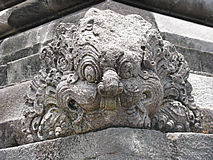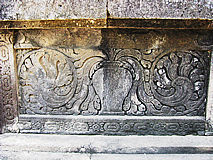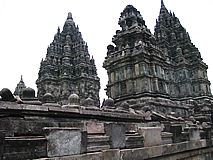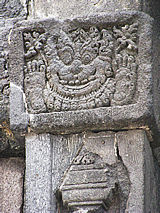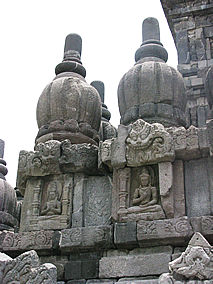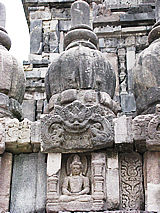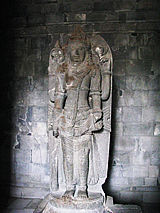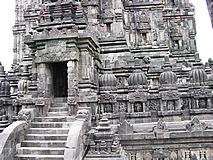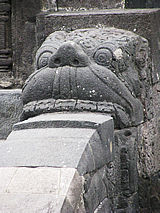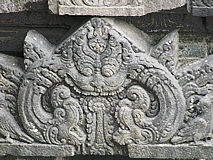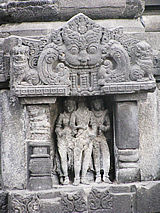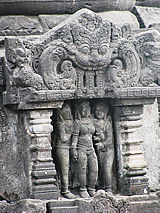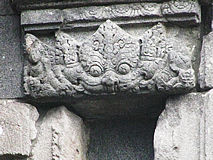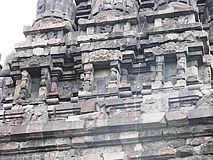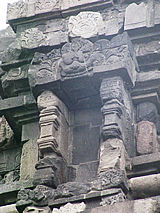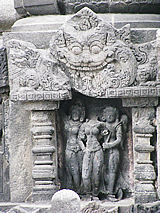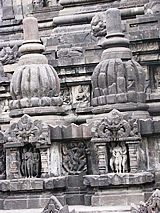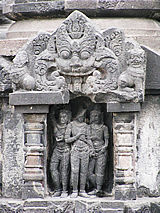Official website
of
HAN MARIE STIEKEMA
VIVA! JAVA
* Javanese mysticism
(Kebatinan) & Traditional Javanese religious tolerance: a model to the world?
*The Yogya Kraton Myth
*Taman Sari
*The Gunungan
*Tutup Ngisor
*What we can do for Java....
*Java: Land of Kala, its Candi's (Temples):
*Borobudur 1
*Borobudur 2
*Borobudur 3
*Borobudur 4
*Borobudur 5
*Borobudur 6
*Candi Mendut
*Candi Pawon
*Candi Ngawen
*Candi Sari
*Candi Kalasan
*Candi Sambisari
*Candi Prambanan
*Candi Lumbung
*Candi Bubrah
*Candi Sewu
*Candi Plaosan
*Candi Gebang
*Candi Ijo
*Candi Banyunibo
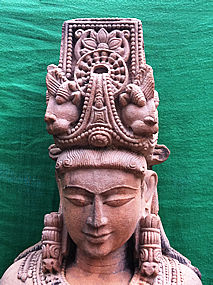
Surprise
A Shiva statue from The Hague, The Netherlands
What makes it interesting is the Cosmic Mother (Great Round) e.g. Lady of the Beast (two lion heads or "makara's linked to the Round) motive on top of his head. It is one of the many proofs that Shiva ultimately is a Son/Lover of the Mother
Prambanan-2
Dedicated to the Trimurti
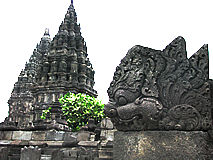 |
THE TEMPLE IS LIKE HINDUISM ITSELF: A ENORMUS VARIETY OF FORMS OF EXPRESSION |
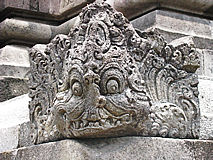 |
|
||
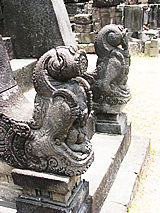 |
Prambanan is dedicated to the Trimurti: the unity of creation, destruction and permanence. In Hinduism these Cosmic Forces are embodied by three Gods: Brahma, Shiva and Vishnu. In our quest for the Origin we understand that the Trimurti orginally were three aspects of the Cosmic Mother. In Her Womb everything dies, is reborn, thus maintaining balance in the "web of life". My challenge at Prambanan: can under the superficial layer of the Trimurti still traces of the Original Mother be found? |
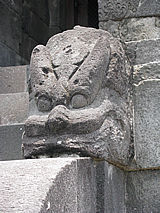 |
|
||
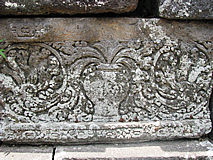 |
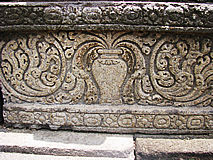 |
|
|
||
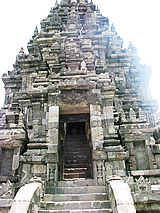 |
The gate to the past is Shiva. First of all he is also known as... Kala. Kala means "the Black One" or also "Destruction". Because of the latter aspect people started calling him the "God of Time". Moreover, most scholars agree on the fact that Shiva originates from pre-vedic times (from before 1500 BCE). He thus precedes Hinduism. Since the Trimurti was "invented" by the latter Shiva must have been an aspect of the ancient Mother. It coincides with the finding of a "proto-Shiva" from the Indus civilization (6500-1500 BCE), the latter also called Harappa or Mohenjodaro. In their turn these civilizations had close contact with Mesopotamia (Sumeria, Babylon) |
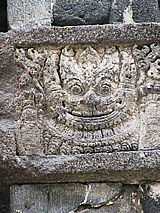 |
|
||
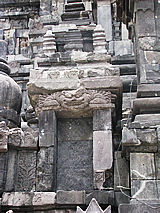 |
 |
|
|
||
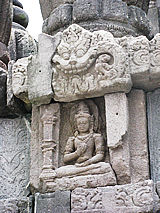 |
In the course of history we see the opposite development. First there is the Universal Cosmic Mother. She is All-Ebracing, including all aspects of life. She is also called "The Great Night". Her Blackness has fascinated people ever since. Everything black is therefore a memory of the Mother. That's why Shiva is still known as "Kala". In fact "Kala" refers to the fact that Shiva once was an aspect of the Cosmic Mother |
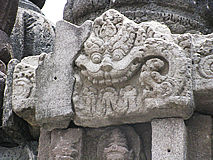 |
|
||
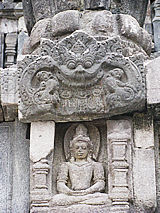 |
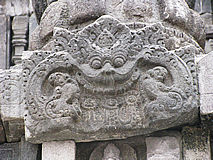 |
|
|
||
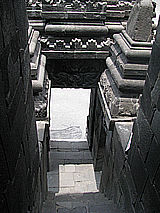 |
In the course of time these aspects of the Mother were separated from the Whole. They started "living a life of their own". So, the Trimurti was born, in which Gods took over the power of the Mother. Rather than worshipping One Origin, people dedicated themselves to various deities, traditions, sects and temples. Prambanan, through its worship of the undivided Trimurti, is still a happy exception. Again, can some of the old connections be traced? |
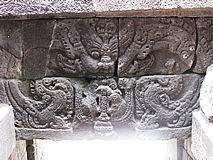 |
|
||
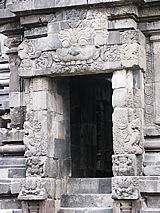 |
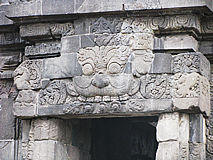 |
|
|
||
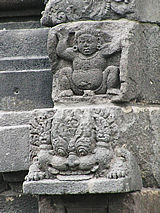 |
"Shiva" can be identified as the separation of the destructive aspect from the Original Mother. "He" made himself independent from Her. Later he even started claiming an all-inclusive Being, becoming a universal God, unifying destruction AND creation. Patriarchal priests thus hoped to having replaced the Mother altogether. Prambanan proves that they did not entirely succeed |
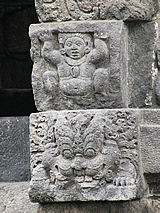 |
|
||
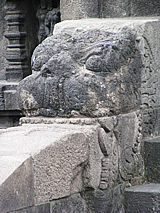 |
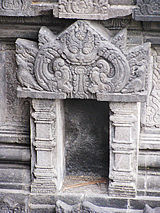 |
|
|
||
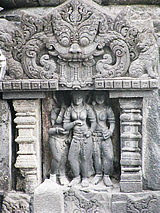 |
Like at Borobudur one image cannot be overlooked. It cannot be one of the Trimurti Gods, because that would bring the Trimurti completely out of balance. Because of its universality it must be a unifying principle. Something emphasizing the Trimurti as Oneness, or otherwise "something" beyond it. So what can there be beyond the Trimurti? Right, the only Cosmic Principle that is bigger than the Gods is the Cosmic Mother. It inevitably leads to the conclusion that the "Kala's" we see so abundantly at Prambanan must represent the Original Mother |
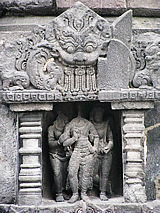 |
|
||
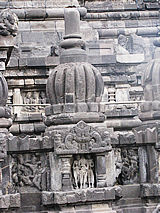 |
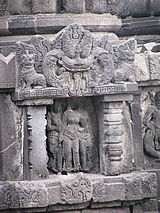 |
|
|
||
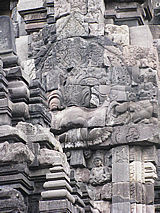 |
In "his early days", Shiva was still close to nature. He therefore is depicted with abundant foliage around his head. It comes very close to the masks of the Green Men we see in Europe. Actually, in the beginning the Sons of the Mother (the Vegetation Gods of Sumeria) went both to the East and to the West. In the course of their development there were several contacts between the two. First through Alexander the Great, later through the Roman Empire. Especially the "early" Shiva might have "fertilized" Europe. The appearences - head with foliage - have many similarities (LINK: Green Men & Wise Women) |
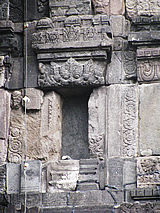 |
|
||
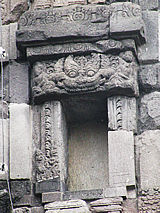 |
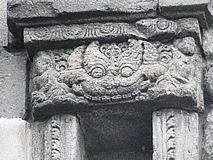 |
|
|
||
 |
The greatest mystery is Kala. How can She be so incredibly powerful? This isn't just a demon, as described by almost all authors. Of course, it is clear - like in all other traditions - that the Deities of a previous era become the demons of the next. So, indeed, what we see is a Demon. She is, however, one whose full Primordial Power is still fully visible. |
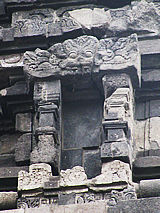 |
|
||
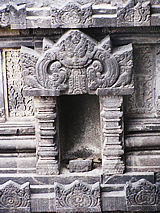 |
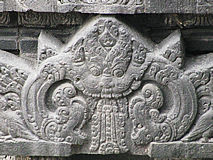 |
|
|
||
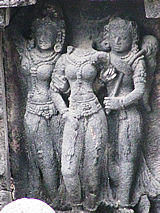 |
To be continued |
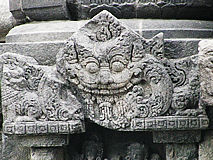 |
|
||
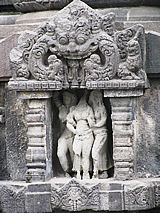 |
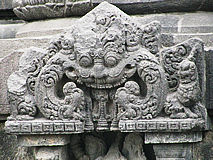 |
|
|
Prambanan-4
1997-2011
© Copyright Han Marie Stiekema. All rights reserved.
Everyone may use this website as a source of inspiration. However, since it
is freely given, no-one can claim, copy or derive any text, rights,
position or status from this website.
Last revising: 08/08/12
